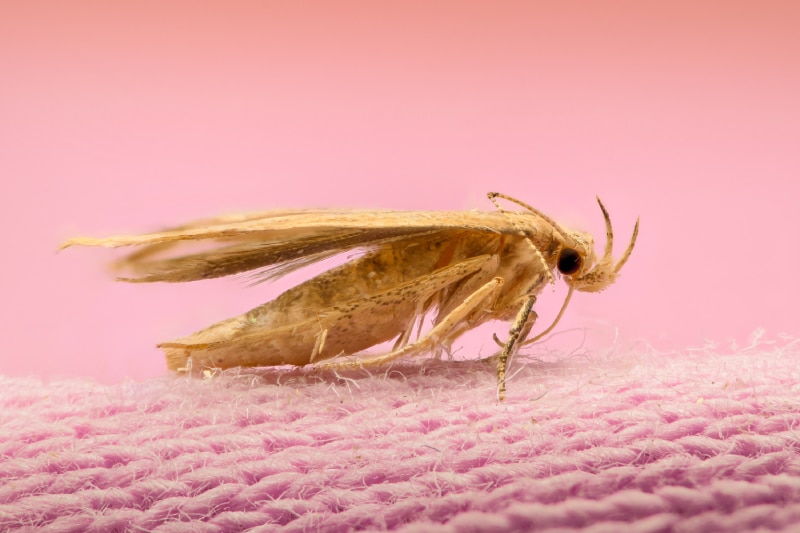When you’re getting ready for the day, the last thing you want is to find a new hole in your favorite sweater. Unexplained damage to clothing is often the work of clothes moths. Understanding what they are and being able to spot the signs of clothes moths can help you take action to protect your garments.
What are clothes moths?
Clothes moths are the most common type of moths that feed on fabric in the US. Adult moths don’t pose a risk to garments; instead, the larva does the damage. The growing moths will feed on the keratin proteins found in wool and fur clothing, carpeting, brush bristles, and felt pads made from wool and other natural fibers.
What does a clothes moth look like?
There are two main species of clothes moths:
- Webbing clothes moths: Also called Tineola bisselliella, these moths are a golden color with reddish-brown hairs on their heads. Their larvae are pale yellow-brown worms with darker red-brown heads.
- Casemaking clothes moths: Also called Tinea pellionella, they have a similar golden color but dark brown or black marks on their wings. Their larvae usually have dark brown or black heads.
Are clothes moths harmful?
Clothes moths aren’t harmful to humans; they won’t bite or sting. However, they can do serious damage to clothing, and unfortunately, the types of items they like to dine on, like wool suits and fur coats, are often some of the most expensive garments in a person’s closet. They can also do costly damage to upholstered furniture, carpeting, and area rugs.
Where do clothes moths come from?
Typically, adult clothes moths enter homes through vents, ducts, gaps, cracks, and crevices. Because they are so small, they can find entry points you’re unlikely to see simply by visually inspecting your home. They can also get into your house on thrift clothing and furniture. As a result, you should thoroughly clean any secondhand items you buy before displaying them in your home, hanging them in your closet, or storing them in drawers.
Can you see clothes moths with the naked eye?
Adult clothes moths are typically only about 0.25″ long. As a result, they are challenging to see with the naked eye. The best way to identify a clothes moth is to place it on white paper and examine it under a magnifying glass. If you notice red-brown hairs on the pest’s head, you likely have a clothes moth rather than another species.
How to tell if you have moths in your wardrobe
Typically, people discover clothes moths by finding damage on their clothes. You may find excrement from larvae on clothes if you have a large infestation. The feces typically looks like tiny black specks or grains. However, dyes from clothing can discolor feces, so it’s possible to find it in other colors.
If you have casemaking moths in your home, you may find silken feeding cases in your closet. The casings are long tubes with a fuzzy appearance. Webmaking moths may leave behind tunnels of fibers on clothing or upholstery.

What does clothes moth damage look like?
Clothes moth damage typically shows up as small, irregularly shaped holes. In some cases, the damage is very easy to spot, but larvae often feast on fibers in hidden areas, such as under collars or the insides of cuffs.
When the damage first begins, the area will feel and look thinner than the rest of the garment. If allowed to continue, a hole will likely form.

Clothes moth pest control services
Because clothes moths are so tiny and tend to infest delicate fabrics, dealing with an infestation on your own can be difficult. Hawx Pest Control has the technology, tools, and know-how to address clothes moths safely. In addition, our licensed pest control technicians can teach you how to tell if moths are eating your clothes sooner and identify possible entry points that you can fix. They’ll also help with clothes moth prevention to help reduce the risk of future infestations.




